Last week I hosted the first Bestseller Summit here in Nashville, Tennessee.
This was the first time I had put on my own event for my own tribe.
It was full of all the stress, emotions, and craziness that you would assume comes with doing that kind of event.
But it also had a lot of amazing moments.
In this post I’m going to share a few things:
- Why I hosted a conference
- My vision for the event
- What you can learn from my experience
Let’s get started.
Why host an event?
This is a tough one.
Sheer practicality says it’s a bad idea. You almost always lose money on your first event (and I did), it’s a ton of work, and it’s a high stress venture.
There are, however, many intangible benefits, such as:
The joy of physically bringing your tribe together in one place.
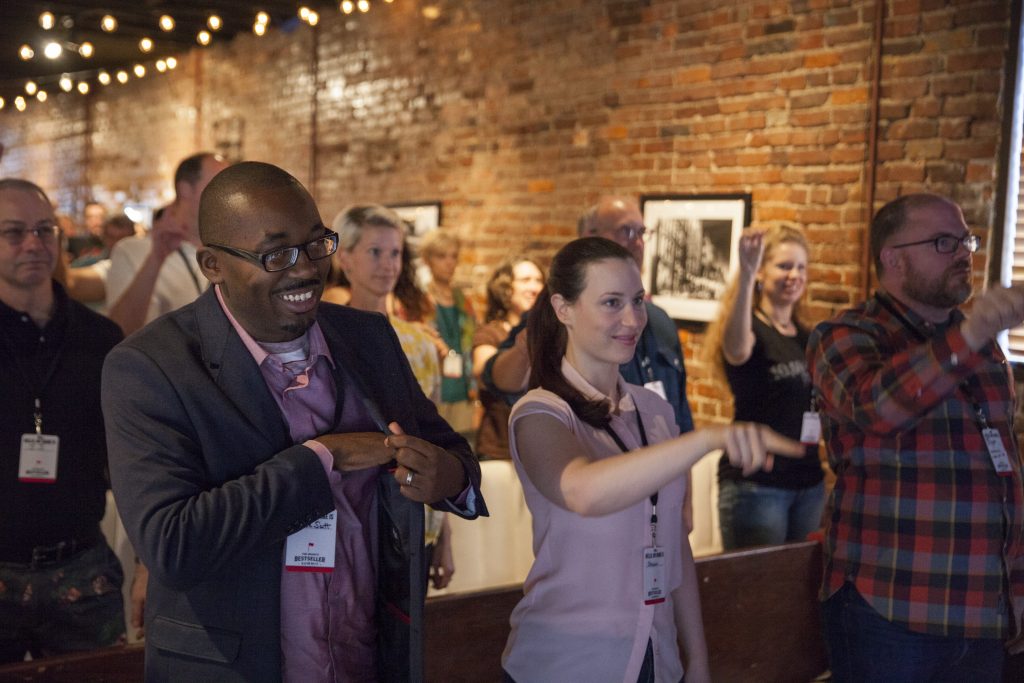
At one point during the conference, I asked everyone who had been following me since I tried to sell 10,000 books in a single year, to raise their hand.
Almost half the people there put a hand in the air.
And that project had happened three years ago.
I realized in that moment that my tribe members had been waiting for a chance to congregate.
And there is nothing quite as satisfying as looking out over a crowded room and knowing that you brought those people together.
I got emotional over this fact several times throughout the conference.
Real vs Digital
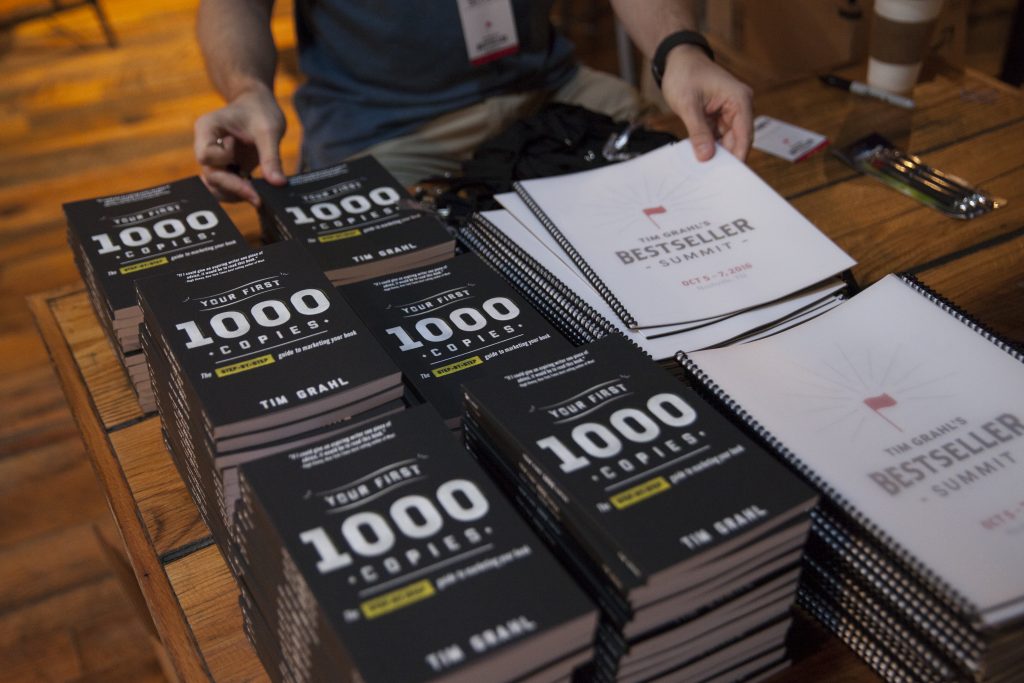
This was a jump forward for me, because almost everything I do for my work happens behind a computer screen.
That creates a distance between me and my audience that, over time, expresses itself in fear.
I had been feeling afraid that once people finally saw and heard me in real life, they wouldn’t like what they found.
I do speak at other people’s conferences from time to time, or host a meetup somewhere. But I had never before taken the higher-level risk of asking people to travel just to experience something I was hosting.
Stepping into that place of risk was an important moment for me.
Like every writer, I’ve got my own fears that I have to constantly face, and this was one of them.
Brand Signaling
It says something, that I could create an event out of thin air and get people to show up.
It also says something, that I could get authors like Pamela Slim, Jeff Goins, Bryan Harris, and Joe Bunting to come and speak on a no-fee, volunteer basis.
This is why, in the logo of the event, it says “Tim Grahl’s Bestseller Summit.”
Similar to how publishing a book changes your status from “writer” to “author,” putting on a conference raises your overall brand to a whole new level.
—
It’s true that I lost almost $2,000 in running this event. There were all kinds of reasons for this.
But I was happy to pay that price for the pleasure of spending a couple of days bringing my tribe together, and meeting you all in person.
My vision for the event
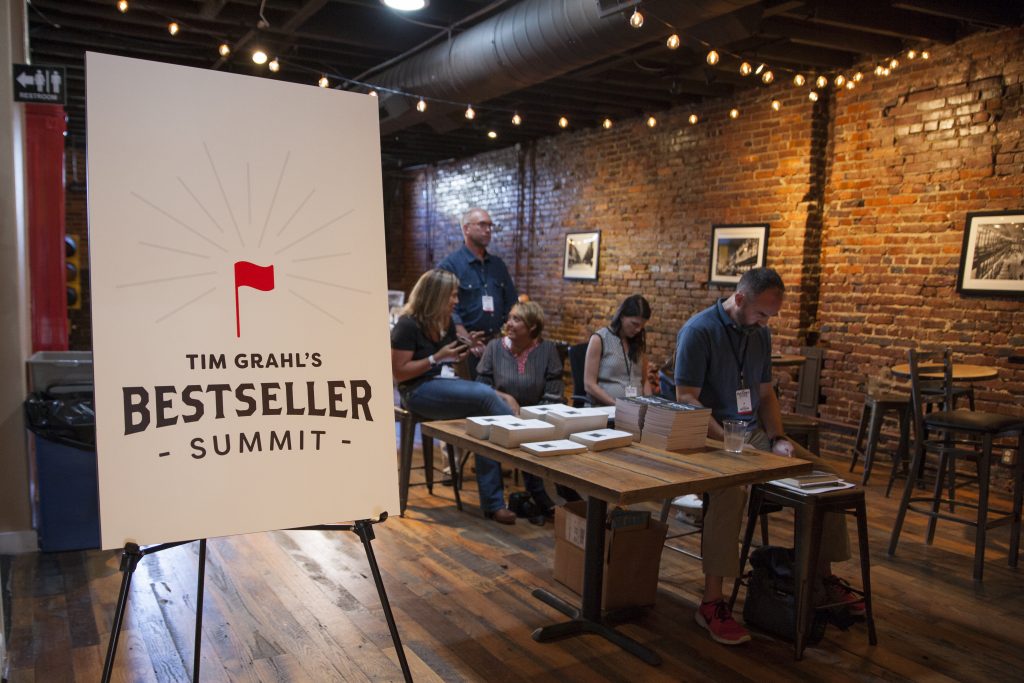
When I hired my very first employee eight years ago, I wanted to be a good employer.
To accomplish that, I just thought back to all of the bosses I’d hated over the years, and in every situation, did the opposite of what they would do.
That’s also where I started with my conference.
I thought through everything I didn’t like about conferences I’d attended, and I did the opposite.
Here’s the Do-Not-Do list I came up with:
1. Too many speakers.
Most conference schedules are slammed with speakers. I took a look at one conference that had over 140 speakers listed.
That’s too much, and too overwhelming.
I would rather have fewer speakers, spaced at reasonable intervals, so I can really take in what they’re saying.
I’ve found that for most conferences, for every three speakers presenting, there’s one good one, one who’s just OK, and one who shouldn’t have shown up.
I wanted the Bestseller Summit to have fewer speakers—all of them good, and zero bad.
2. Too little time with each speaker.
When a conference slams their schedule with too many speakers, you inevitably get very little time with each one.
It’s like skipping a rock across the water; you never really get to deep-dive into their expertise and outlook.
I wanted to give my attendees a chance to really go deep with speakers.
3. Contradictory advice.
I was at a conference once where I was waiting backstage to speak, and listening to the guy speaking right before me.
He was giving the exact opposite advice that I was about to give.
While there is room for differing opinions in life, the attendees were there to gain new information and guidance they didn’t already have.
If you give an audience contradictory advice from different speakers, it creates a situation where they can’t discern what they should be doing.
I wanted to make sure that everyone who came to the Bestseller Summit walked away with one clear path to their success.
4. No narrative arc.
Not only is advice often contradictory at conferences, it’s also too random.
You’ll deep dive into character development at one talk, then next have a panel discussion on cover design.
I wanted to create an experience that naturally walked people down a particular path, from start to finish.
5. Too many people.
While I love some aspects of being at conferences with hundreds or even thousands of people, it can quickly become overwhelming.
Plus, you never seem to get quality time with the people you really want to spend time with.
I kept registration for the Bestseller Summit to 75 people, so we would have time to spend with each other and with the speakers (more on this below).
—
However, just being aware of the negatives isn’t enough to come up with a great event.
A few months before the summit, I sat down with my wife Candace, who was coordinating the event, and we discussed my vision for those three days.
I kept throwing out all these ideas from other conferences I’d been to.
After a little while, she stopped me and said, “Tim, this is your event. You can’t make it anyone else’s event. You have to make it uniquely yours, or it’s not going to work.”
So I sat back, thought about how I like to learn, how I like to teach, and the experience I wanted for every person who’d be attending.
The first thing I came up with was the goal of the event.
The goal of the first Bestseller Summit was to fundamentally change the life of every single writer in the room.
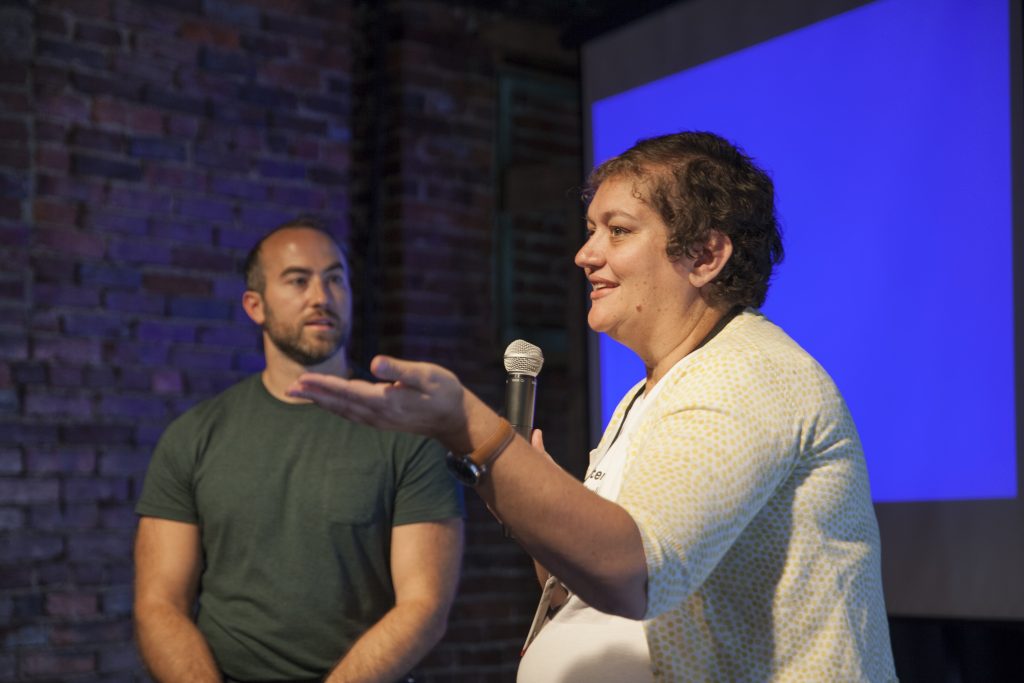
I want each person who attended to look back at the Bestseller Summit as the point at which everything changed for them.
That’s a big goal.
How was I going to pull that off?
This is what I came up with …
1. Plan the content.
I broke the conference into four sessions — morning and afternoon, for two days. For each session, I set a clear topic we would be learning about.
The four topics were Permission, Content, Community, and Outreach.
I then chose a specific speaker to address each of those topics (more on that below).
And then I really went Control Freak.
I got on the phone with each speaker, and walked them through exactly what I wanted them to teach, how I wanted them to teach it, and how I wanted them to end their talk.
I even critiqued the content beforehand, and asked for changes to one of the speaker’s slides.
I was obsessed with making sure the content was cohesive and clear.
Thankfully, the speakers were gracious about my craziness, and excited about my vision for the conference.
2. Four speakers, no more.
Once I had my four session topics set, I invited the specific person I thought would be the perfect choice to share on that topic.
Here’s who I chose, and why:
Permission – Bryan Harris
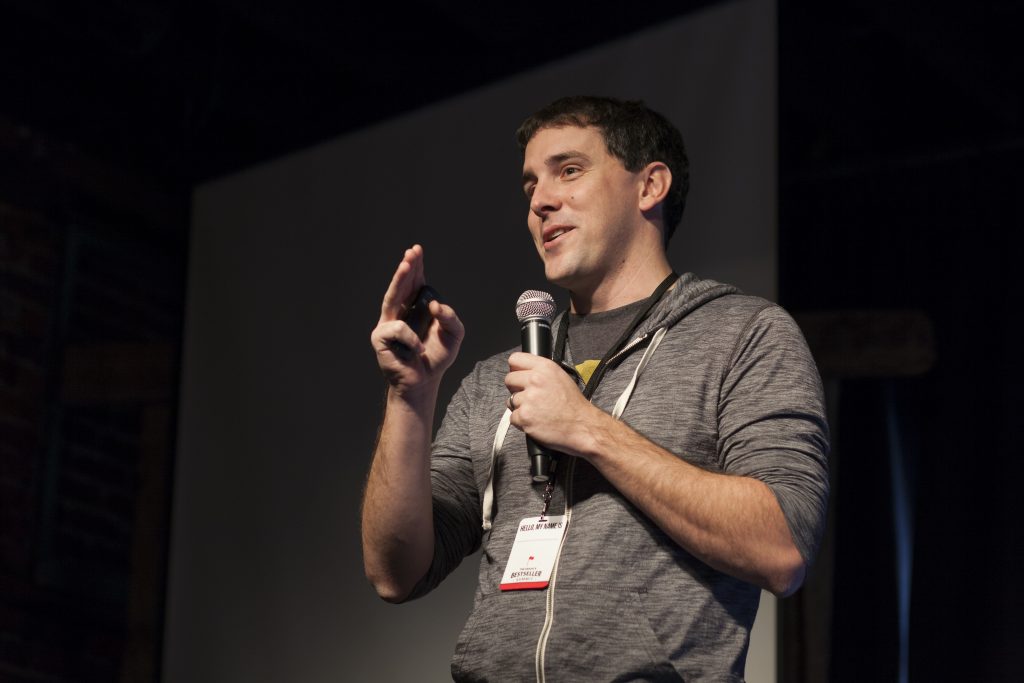
Bryan Harris created the site VideoFruit and the online program Get 10,000 Subscribers.
His sole focus is helping people build their email lists. He works with both big name companies and individuals, and he does it incredibly well.
His advice on getting permission is step-by-step and clear. He’s the guy I go to when I get stuck on how to build my email list.
Content – Jeff Goins
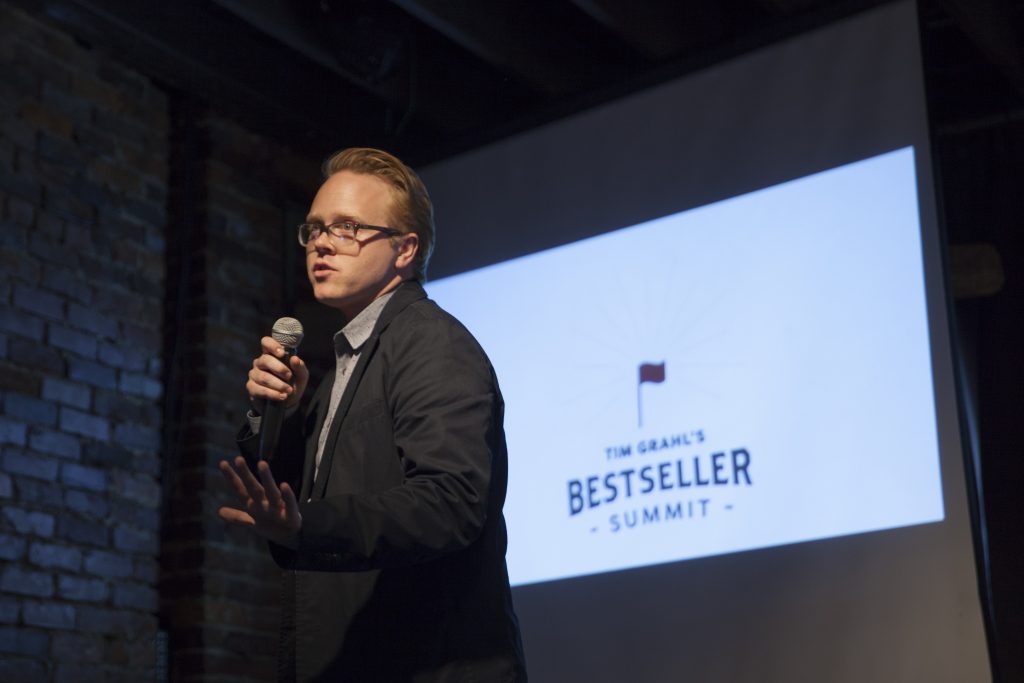
Jeff is the author of four books, including the bestseller The Art of Work.
He is the most consistent writer I know. He not only writes new books often, turning them in on time, but he also regularly creates great content for his website GoinsWriter.com.
He wrote a brand new talk on content just for the Bestseller Summit, to share his process for developing and publishing great content.
Community – Pamela Slim
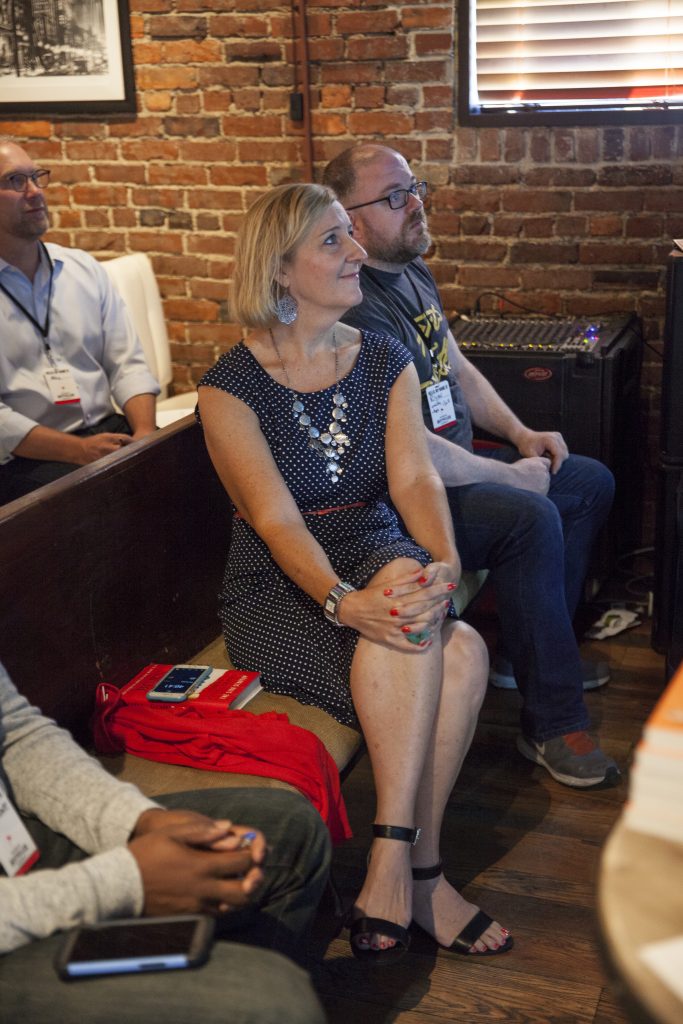
There was only one person I wanted to speak about community, and that was Pamela Slim. I would have moved the conference dates to fit in with her schedule.
I worked with Pam for a long time, and I was always amazed at how she built such a dedicated and steadfast community of fans.
She broke this down into step-by-step processes for the Bestseller Summit attendees.
Outreach – Joe Bunting
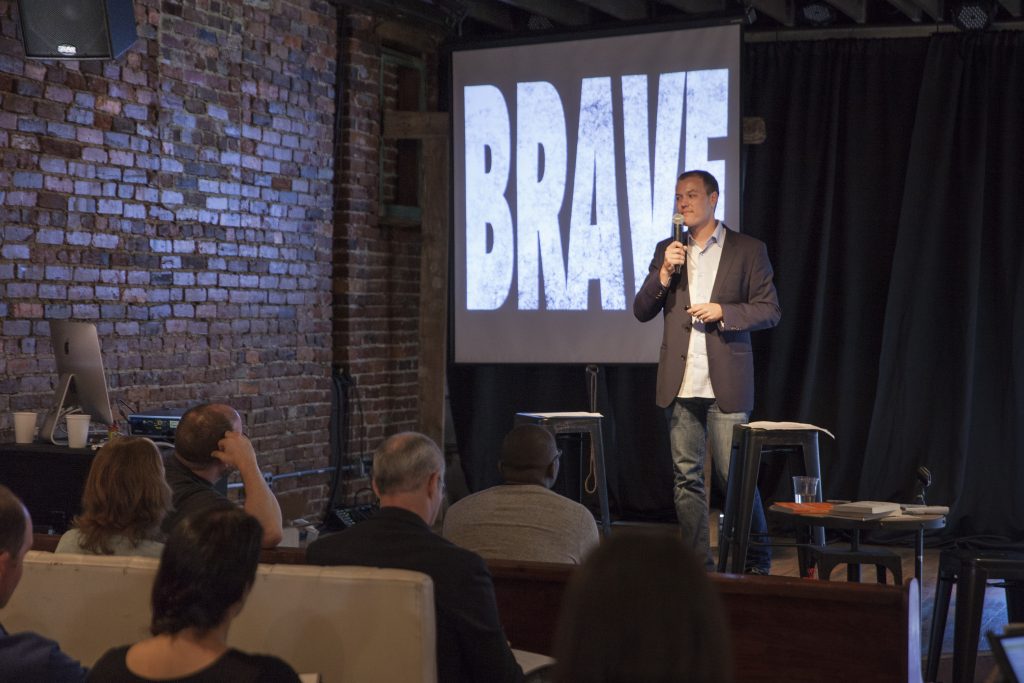
Joe is the creator of The Write Practice. He’s a writer’s writer.
He is introverted, soft spoken, and would rather spend his time alone writing than doing anything else.
And yet, Joe has built an incredible network of influencers.
There are a lot of loud, boisterous people who love to talk about networking, but that kind of presenting style is overwhelming to me, and to most writers.
For a talk on outreach, I wanted to bring in someone who was a writer first, and not a natural networker, to share the process they use to get it done.
Joe did exactly that.
He broke down exactly what he does — the timing, questions, emails, and more — to continually connect with new readers. It was amazing.
3. Lots of time with each speaker.
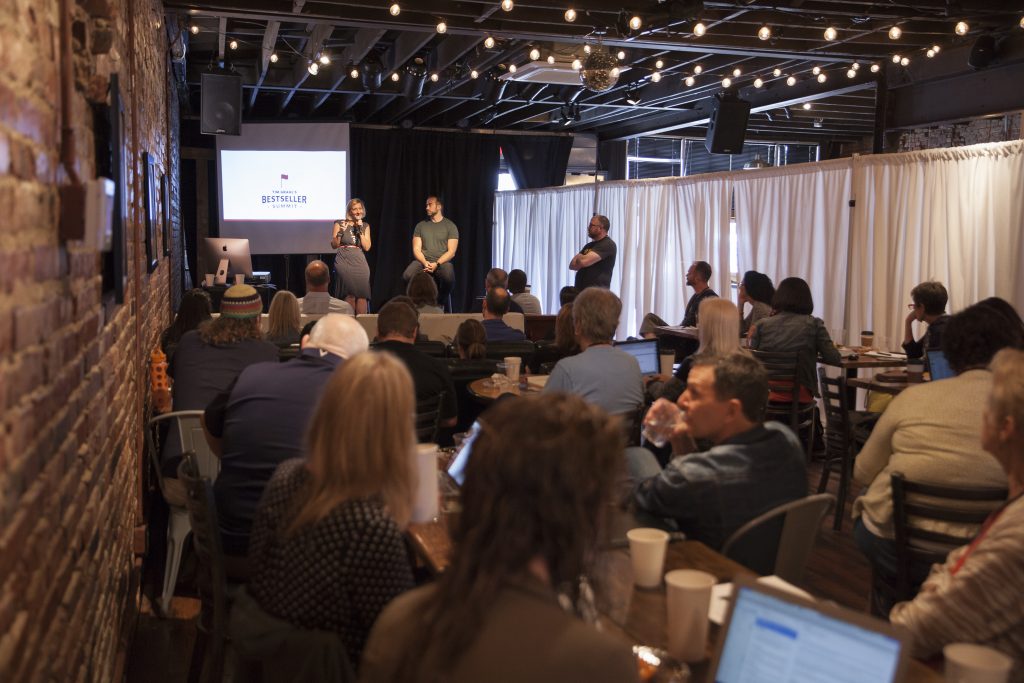
As I said above, I wanted to go deep with these speakers.
If I didn’t have to worry about cramming 20 different experts into the schedule, then I could take my time with each one.
Here’s how I did it:
- The speaker would give their talk for 45 minutes.
- After their talk, the speaker and I would do a 30-minute Q&A with the audience.
This means that the attendees got at least an hour and fifteen minutes to learn from each speaker. And most people got their individual questions answered.
4. I spoke four times.
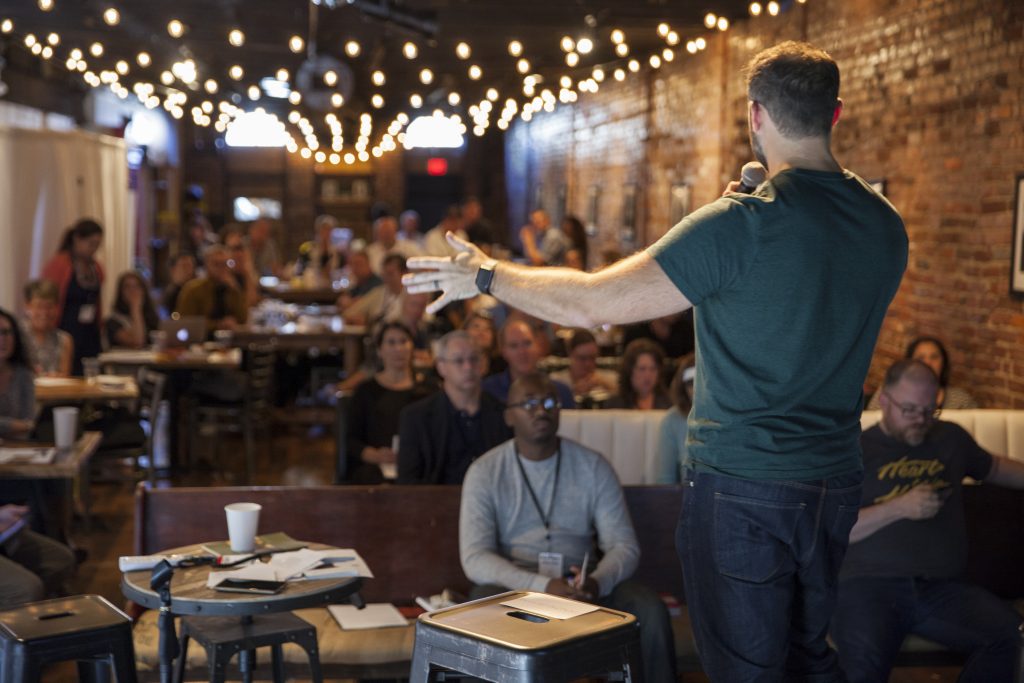
People were coming to the Bestseller Summit not only to learn from the invited speakers, but from me too.
This was another area where I had to get over my fear and own this fact.
So I spoke four times at the Bestseller Summit. I gave a presentation at each of the four sessions.
I wrote brand new presentations beforehand, for each session.
While this was definitely a stretch (a couple of my speaker friends asked me if I was crazy), it’s what I thought needed to be done to make the conference the best it could be.
5. Audience stories.
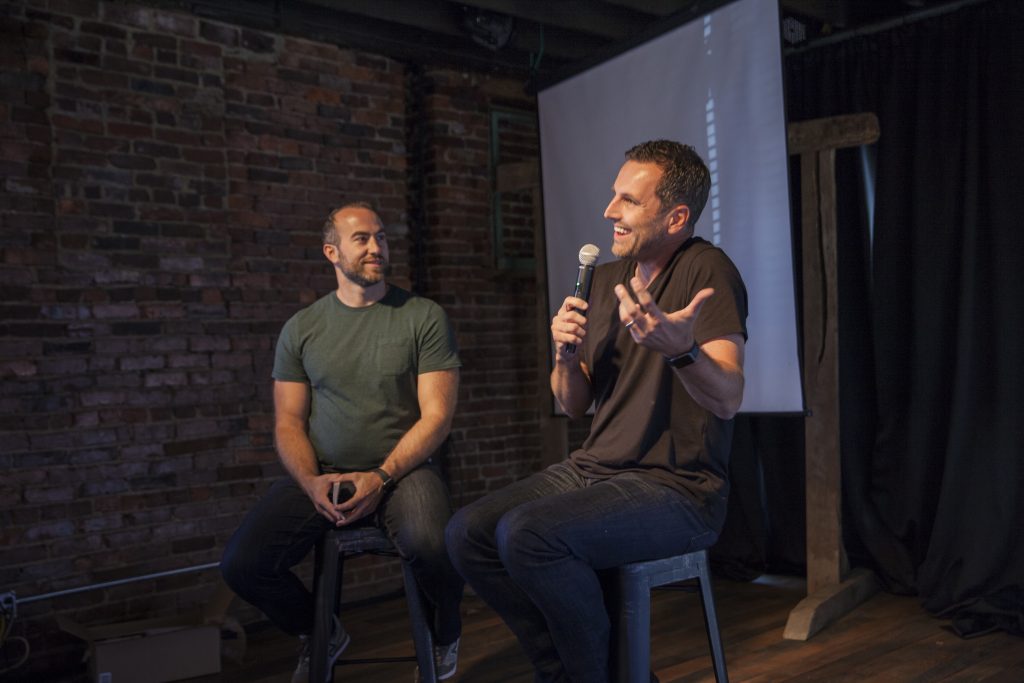
At each of the four sessions, I brought up one of the attendees to share their stories of success.
These were short, 15-minute vignettes, but I found they had a big impact, because they showed how “normal” everyday authors were putting the ideas presented at the Bestseller Summit into practice.
6. Keep it simple.
In everything I teach, I try to break down each concept to its simplest form.
I believe most good things come from avoiding complexity and focusing on a handful of awesome ideas, instead of trying to do everything at once.
Having only 75 attendees and four speakers meant I could keep things small, focused, and kick-ass, instead of trying to include every bestseller concept or method on Earth.
—
That was my vision for the first Bestseller Summit.
And it went great.
We had some technical difficulties and a few other snafus that happen when you’re putting on live events, but I can honestly say that my vision for the event came through and landed exactly as I had planned.
That was extremely satisfying, and the attendees have given tons of fantastic feedback so far.
What I learned from hosting my first conference
As with any new experience, there are things you know going in, things you can plan for, and things that come out of nowhere to sideswipe you.
Here are the lessons I learned along the way:
1. Ask. For. Help.
I tend to try to do everything myself. I like it that way.
In most cases, I don’t mind that things move more slowly that way. Flying solo gives me the control and freedom to do things the way I want them done.
But I couldn’t do that with this conference.
If it were left to me, my attendees and I would have been meeting in a park somewhere, sharing a bag of Dorritos.
Here’s who stepped up to help in a big way:
Candace Grahl
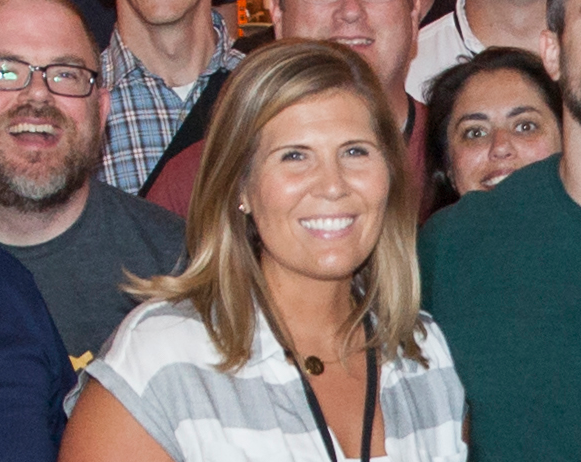
Candace coordinated the entire event. She helped find the venue, and made sure it had all the features we needed.
She planned all of the refreshments, and set the tone for the event. She kept the master checklist to make sure all of us were doing what we needed to do at the right time.
And she talked me off that ledge, whenever my pre-event anxiety spiked.
Plus, she’s gorgeous!
Ryan McRae
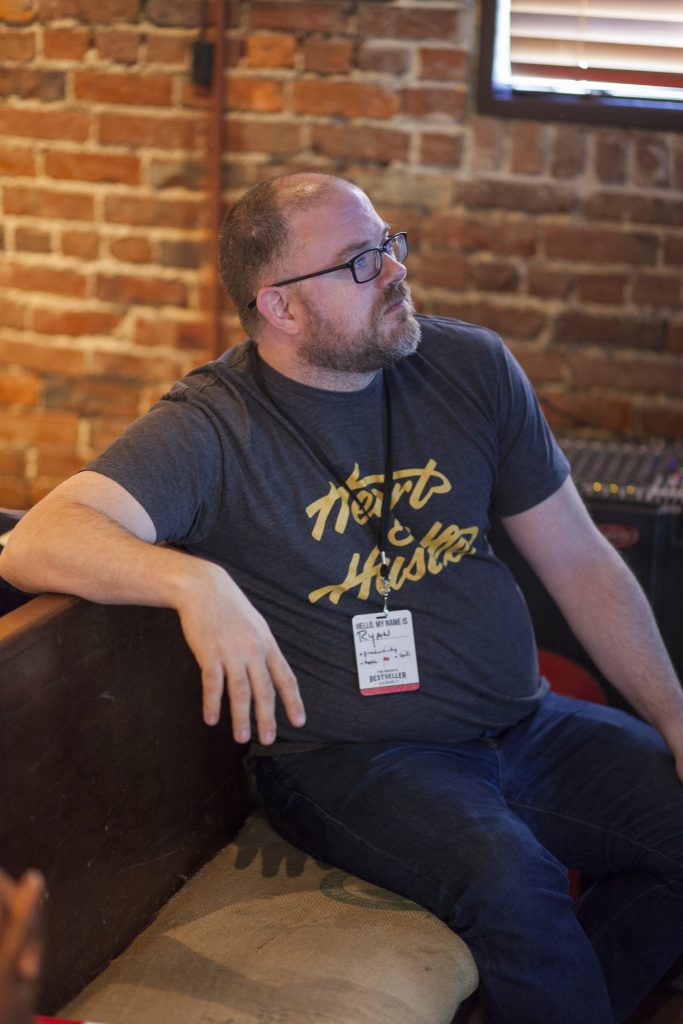
Ryan came in from Chicago to help us behind the scenes.
He fixed the projector when it wasn’t working. He helped me wrangle people up after break times. He carried boxes in from the car.
He was the grunt worker who did all of the unglamorous work, to make sure the attendees had a smooth, fun experience.
Plus, it was just nice to know someone else was freaking out about things with me.
He’s not so bad-looking himself.
Jeff Goins
Jeff puts on his own annual conference, and shared all kinds of knowledge with me.
He also let me rip-off his badge and workbook design graphics.
The speakers
I didn’t have the budget to pay the speakers’ fees, so they graciously donated their time. I am so thankful for each one of them.
The volunteers – Eric Slade and Kallie Ross
They welcomed attendees, helped Candace set up, unpacked boxes, and generally made sure everything went smoothly.
They were amazing!
—
You can’t do something on the scale of a professional conference without help from other people.
2. Relax and have fun.
The whole first day I was stressed and on edge. This means I didn’t enjoy the entire first day of the event.
That was kind of sad.
So on the morning of the second day, I was standing in my kitchen making coffee and decided I would have fun that day. And lo and behold, I had a great day.
Work hard, plan well, but ultimately, stop and enjoy this thing you’ve created.
3. Do it your way.
If I had tried to create an event that was like someone else’s, it would have failed.
Candace’s advice to make it mine was exactly what I needed to hear.
You have a vision. You have a calling. Infuse everything you do, unapologetically, with you.
4. Do the thing that scares you.
I’ve been scared of doing a live event for a long time. Now that I’ve done it, I wonder what I was so scared about.
Isn’t that how it usually works?
5. Spend money on the things that matter.
I saved $800 by printing the workbooks in black and white instead of color.
Nobody cared.
I spent $1,700 having the event photographed.
This was a last-minute expense I added, and I’m so glad I did. I would have been really sad if I hadn’t documented my first event.
I spent $1,050 on a meet-and-greet the night before the event began.
This made it easy for people to get to know each other before we crammed them all into one room to learn for two days.
Sure, it was just people standing around talking and drinking, but it started the event off with a strong sense of community. Well worth it.
Suck it up and spend money on the important parts.
6. Accept the mess. Things usually work out.
We planned well. Worked hard. Got everything done ahead of time.
And things still went wrong.
Back at my last job before starting my own company, I would run the tech for the big conferences they put on.
One time, I was literally putting out a fire behind the scenes. One of the printers caught fire behind the registration booth, while people were trying to check-in.
I quickly put out the fire, found another printer, and we kept going.
Nobody knew, and they had a great event.
During my own event, the projector didn’t work during the first speaker talk.
The coffee shop next door was loud and distracting. And I forgot to make a few announcements that would have made things clearer for the attendees.
Stuff happens. The attendees still had a great event, and that’s what matters.
If your vision and focus are clear, then things really have to go off the rails for something to be completely ruined.
—
The rules
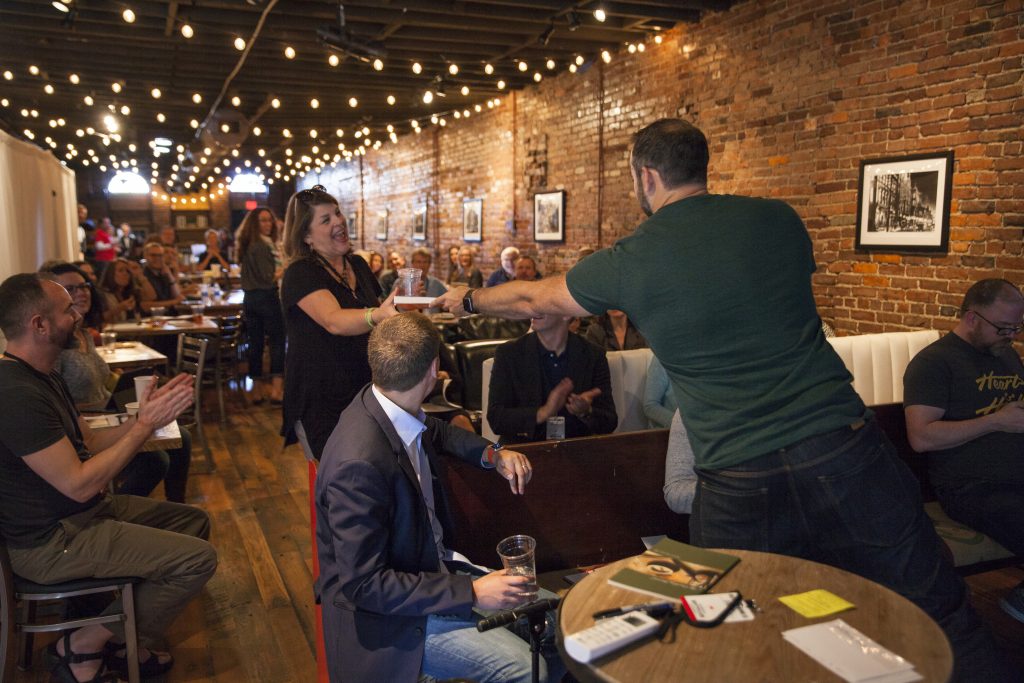
I opened and closed the conference with four rules for our time together:
- No shame. You’re not allowed to shame yourself or each other.
- We’re all in this together. This wasn’t an event for individuals. It was a way for us to come together as a supportive community.
- We have to help each other. The moment one person sits back, steps out, criticizes, or becomes apathetic, it hurts everyone.
- Success is taking the next step. We are all at different stages, and it’s easy to look at those ahead of us and feel shamed or “behind.” The problem is, there is always someone you can find who seems to be better or worse off than you. Success isn’t a destination. It’s taking the next step.
These were the rules for the Bestseller Summit. These are the rules I want for you, and all the tribes you’re in.
I put together the Bestseller Summit so that authors could come and learn how to build their platform, connect with readers, and sell more books.
But I also did it so that, for at least a couple of days, we could all feel normal.
We have these dreams and goals that seem so foreign to most of the people in our lives. It’s important to sometimes spend time with a few other people who are in the fight with us.
Thanks to everyone who made Bestseller Summit 2016 a reality, and to every attendee who took a chance on showing up for my very first event!
Lastly, all of the photos above were taken by the amazing Sionnie LaFollette. If you’d like to see all of the pictures from TGBSS 2016, we have them up here.
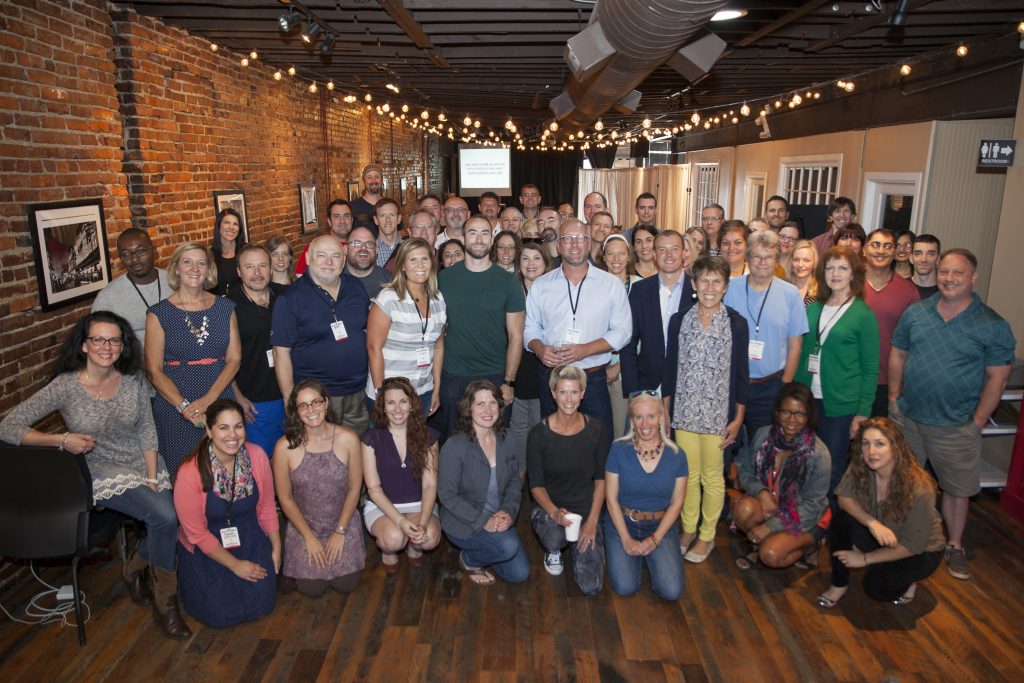
Leave a Reply